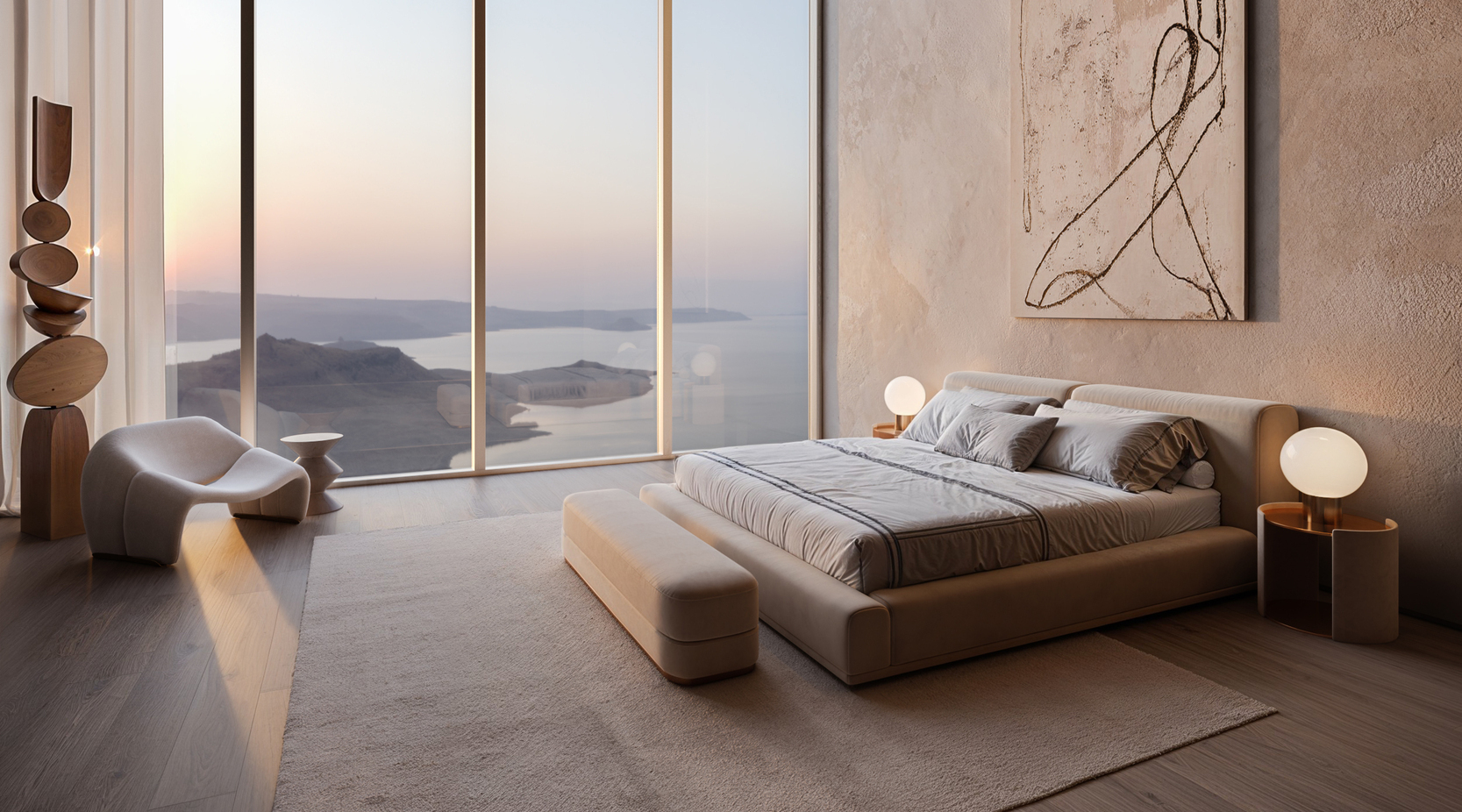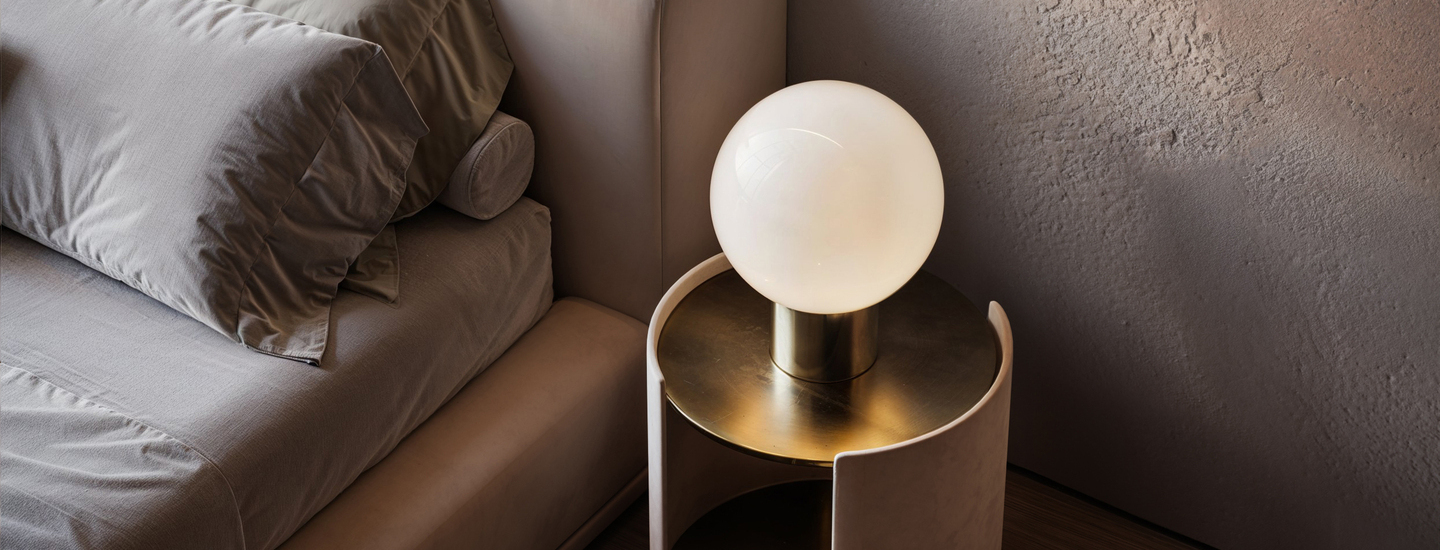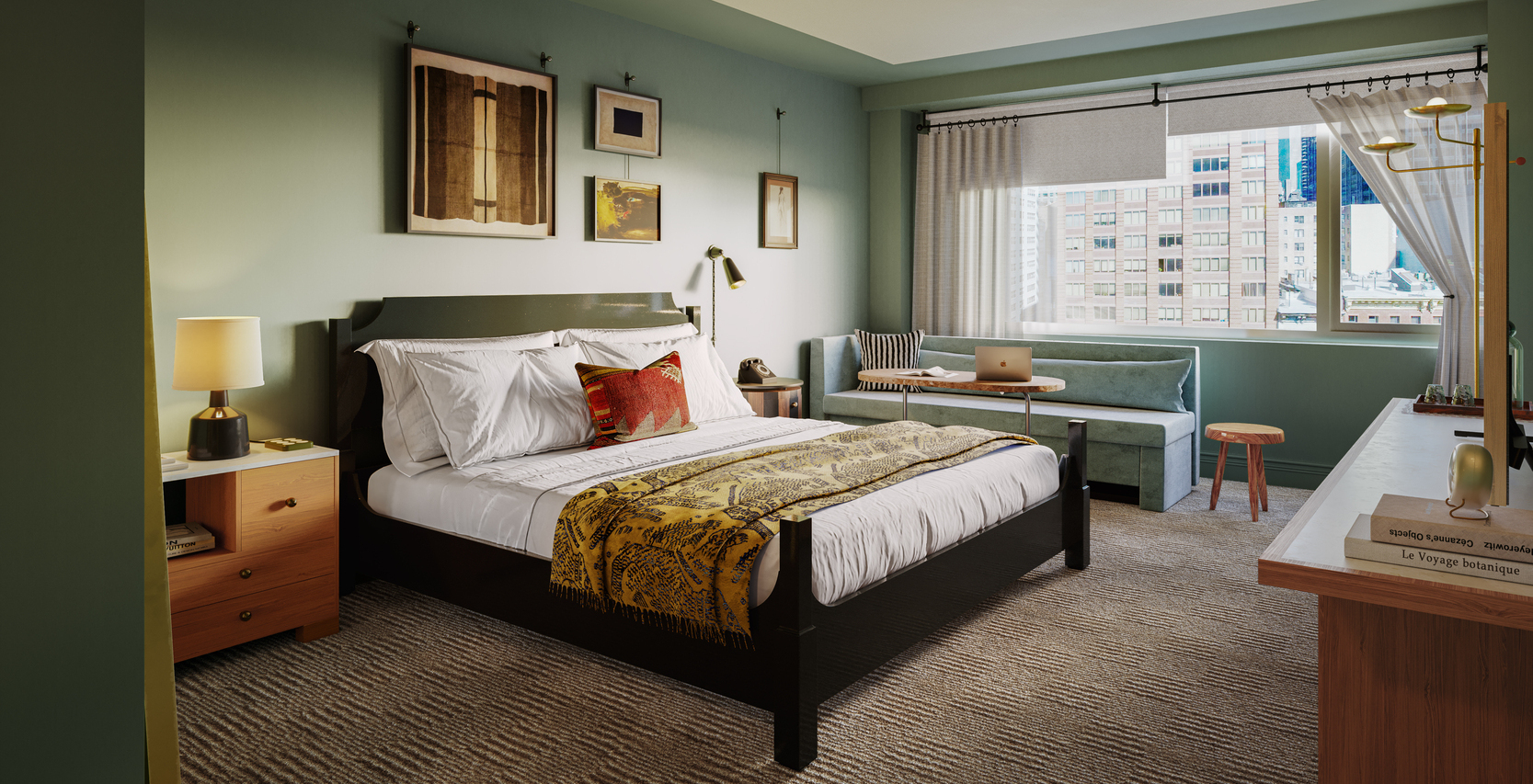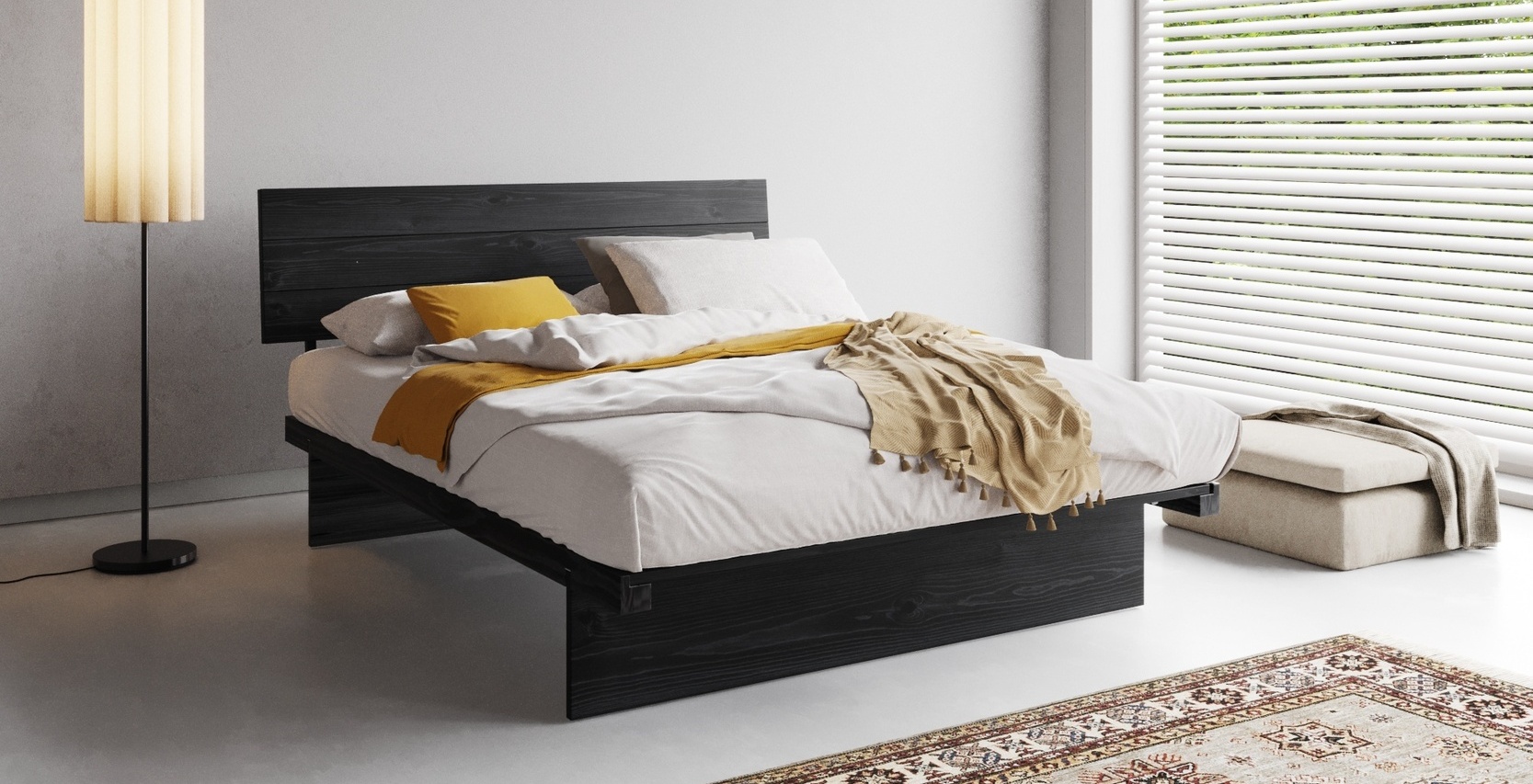How To Stage A Bedroom To Enhance the Overall Value: 5 Essential Tips

Key Concepts in Bedroom Staging
Staging a bedroom is far more than tidying up and adding decorative pillows. It’s a psychological and visual strategy designed to transform a private space into a universally appealing sanctuary that sells. In 2025, the art of staging a bedroom merges traditional design principles with the power of advanced 3D rendering, helping buyers envision comfort, luxury, and potential at first glance. Learn more about the advantages of 3D visualization and how it elevates real estate marketing impact.
Professionally staged bedrooms make a powerful impression during an open house, helping potential buyers emotionally connect with the property. For listings for sale, strategic bedroom staging often turns curiosity into genuine interest within seconds.
At its core, bedroom staging serves three primary purposes:
1. Creating the illusion of spaciousness.
2. Maximizing visual interest and emotional appeal.;
3. Highlighting architectural strengths with precision and balance.
A well-staged bedroom highlights natural light, beautiful flooring, and symmetry while maintaining a sense of calm and order. The room must feel open and aspirational yet attainable — a place where potential buyers can imagine themselves unwinding after a long day.
Depersonalization is key. Removing personal items, family photos, or overly bold artwork allows a buyer’s imagination to take center stage. This neutrality doesn’t mean emptiness; instead, it creates a “blank canvas” where universal design choices make the bedroom approachable for diverse tastes.
In modern real estate marketing, 3D bedroom staging takes this process to the next level. Through photorealistic rendering, artists at studios like Omegarender craft visuals that enhance spatial perception and eliminate the limitations of photography. By controlling composition, lighting, and texture accuracy through Physically Based Rendering (PBR), these images help realtors and developers showcase every nuance of a room — from soft linens to the glow of ambient light — with striking realism.
Let’s create bedrooms that buyers dream of sleeping in — contact us today.
%20(1).jpg)
Trends in Bedroom Staging
As design trends evolve, bedroom staging ideas must align with the modern expectations of buyers. The 2025 aesthetic embraces warmth, tactility, and authenticity — moving away from sterile minimalism toward serene, organic comfort.
1. Soft Forms and Rounded Furniture
Curved lines dominate 2025 interiors, symbolizing softness and approachability. Rounded headboards, arched mirrors, and sculptural lamps make the space feel inviting and fluid — a direct emotional cue for relaxation.
2. Warm and Grounded Color Palettes
Neutral hues are timeless, but this year they carry a deeper, earthier tone. Warm beige, taupe, cocoa, and olive create a soothing foundation. These are accented with rich, organic tones like indigo or terracotta for added depth. The result is harmony — perfect for staging a master bedroom or even staging a small bedroom where light reflection matters most.
3. Authentic Natural Materials
Mid-tone woods such as walnut and oak are making a comeback. Their warmth and visible grain patterns convey craftsmanship and quality. Linen, cotton, rattan, and stone textures dominate, reinforcing a biophilic connection that resonates emotionally with buyers.
4. Sustainable and Biophilic Design
The desire for authenticity extends to eco-conscious choices. Incorporating organic textiles, indoor plants, and sustainable materials communicates care and responsibility — key psychological triggers for modern consumers.
5. Technology and Lighting
Integration In 3D staging, subtle representation of integrated lighting and smart technology elevates a room’s sophistication without cluttering the visual field. Discreet wall sconces, hidden LEDs, and ambient light simulations showcase a calm, high-end lifestyle.
%20(2).png)
Step-by-Step Bedroom Staging Guide
Decluttering and Organizing
The foundation of how to stage a bedroom starts with simplicity. Remove everything that distracts from the room’s architecture — excessive furniture, personal mementos, and miscellaneous items. Even in digital staging, this step matters: a clean source photo ensures faster, more accurate rendering.
Organized closets subtly influence perception. Empty at least 50% of shelf space and keep hangers evenly spaced. This signals to buyers that there’s ample storage — a small but powerful cue of functionality.
1. Ambient Lighting: Soft ceiling or recessed lights provide balanced illumination without harsh shadows.
2. Task Lighting: Symmetrical bedside lamps or pendant lights frame the bed and create harmony.
3. Accent Lighting: Hidden LEDs under the bed frame or behind the headboard add dimension and mood.
In 3D rendering, artists replicate these layers with physically accurate light simulations, combining natural daylight (HDRI) and soft artificial glow to achieve lifelike realism. Whether staging a guest bedroom or a luxury master suite, this layered lighting approach builds emotional resonance.
Furniture Arrangement Tips
Spatial logic can make or break a design. The bed should serve as the visual centerpiece, ideally positioned opposite the entrance or a feature wall. This instantly anchors the viewer’s eye and establishes balance.
•In larger bedrooms, like a master suite, consider a statement bed with an upholstered headboard and proportionate side tables.
•When staging a small bedroom, opt for lower-profile furniture and raised legs to create visual space and airflow.
•Maintain comfortable walking paths and avoid pushing every piece against the wall.
Keep bedside styling simple—matching nightstands with soft lighting and clean lines creates a luxurious look that feels intentional yet effortless. Proportion and harmony matter more than quantity. Over-furnishing a digital scene — or a physical room — creates visual noise that diminishes perceived size and luxury.
For brands and designers, Omegarender also offers 3D furniture rendering services to visualize furnishings with photorealistic precision and flexibility.

Color Palette Selection
Color psychology drives emotional engagement. The goal is serenity — a palette that appeals to the widest audience while reflecting sophistication.
Stick to light neutrals (beige, white, warm gray) for walls and main textiles to enhance openness. Accent with richer tones — navy, olive, or rust — through throw pillows, blankets, or artwork. These subtle contrasts maintain interest without overwhelming the eye.
Omegarender’s 3D artists employ PBR texture maps to reproduce these hues accurately under different lighting conditions, ensuring the visual appeal remains consistent across screens and marketing platforms.
When you choose your staging palette, always consider how wall colors interact with the floor finish. A subtle harmony between wood tone and paint shade ensures the entire space feels balanced and inviting.
Personalization without Overwhelm
A well-staged bedroom feels lived-in but not personal. The key lies in layered textures and subtle styling. Coordinated bedding, a neatly organized closet, and a refined dresser instantly convey order and comfort. Don’t forget to position a soft rug near the door to visually anchor the room and enhance its warmth. Add a few decorative items — a neutral vase, a small stack of books, or a soft plaid blanket — to convey warmth and authenticity.Avoid over-decoration. Buyers should see potential, not personality. In digital staging, even these minimal touches — a coffee cup on the nightstand or a single abstract painting — can transform a sterile scene into an emotionally engaging story.
Natural materials such as linen, rattan, and jute contribute tactile realism both in physical and virtual setups, embodying 2025’s trend toward calm, sensory interiors.
Turn every bedroom into a showpiece of comfort and style — talk to our 3D team.

Expert Tips from Staging Professionals
Professionals agree: precision and realism determine success when staging a bedroom — especially in 3D.
1. Prioritize Physically Based Rendering (PBR).
PBR technology ensures every material — from polished brass to matte linen — behaves under light just as it would in real life. This technical rigor is what makes Omegarender’s bedroom visualizations so convincing and trustworthy.
2. Respect Scale and Proportion.
In both physical and virtual staging, furniture must match the room’s true dimensions. Oversized items shrink space; undersized pieces make it feel sparse. In 3D rendering, exact scaling ensures architectural credibility and buyer trust.
3. Balance Density.
Avoid “overstaging.” Too many decor elements cause visual fatigue. Too few make a space feel lifeless. The goal is elegant simplicity — cozy, but with breathing room.
4. Maintain Transparency.
If virtual modifications are made (e.g., wall color changes or furniture swaps), disclose them clearly. Ethical visualization builds long-term credibility for agents and developers.
5. Optimize for Marketing Platforms.
High-resolution JPEGs for listings, square crops for social media, and metadata-rich images (including alt text) improve SEO reach and accessibility. For developers showcasing layouts and spatial planning, Omegarender’s 3D floor plan rendering services provide clear, scalable visuals that enhance buyer understanding.

Bedroom Staging Rendering Examples from Omegarender
Omegarender has redefined what it means to visualize interior spaces through 3D rendering. The studio’s bedroom staging portfolio showcases the perfect fusion of design insight and technological precision.
Example 1: Minimalist Eco Retreat
A bedroom rendered in natural stone and organic linen demonstrates how simplicity and soft daylight can communicate peace and elegance. By reducing visual clutter, the render achieves both emotional resonance and production efficiency.
Example 2: The Power of Light
In a spacious master bedroom, Omegarender artists simulated golden-hour lighting to evoke warmth and intimacy. Subtle non-physical light adjustments enhanced the overall atmosphere — a reminder that realism is as much about emotion as accuracy.
Example 3: Lifestyle Luxury Scene
For a French-inspired suite, the rendering incorporated exterior reflections through arched windows and intricate texture mapping. These details — reflections, depth, environmental context — elevate the scene beyond architecture, selling a lifestyle rather than just a room.These examples underline why professional bedroom staging ideas rooted in advanced visualization consistently outperform basic photography. They combine design psychology, technical precision, and visual storytelling to inspire faster, higher-value sales. Explore Omegarender’s full range of 3D interior visualization services to see how advanced rendering techniques bring interior concepts to life.
%20(1)%20(1).jpg)
Conclusion
In 2025, the boundary between staging a bedroom and digital artistry has virtually disappeared. Successful staging — whether physical or virtual — relies on understanding both human psychology and visual technology. Neutral color palettes, layered lighting, realistic materials, and emotional storytelling work together to craft a universally appealing vision of comfort.
For real estate professionals, developers, and interior designers, investing in 3D bedroom staging is no longer optional — it’s a strategic advantage. The goal of every staging project is to help buyers imagine how they could truly live in the space—comfortable, inspired, and connected. By partnering with industry leaders like Omegarender, you can transform an ordinary listing into a visually compelling narrative that accelerates sales, boosts engagement, and maximizes ROI.
Whether you’re staging a master bedroom, staging a guest bedroom, or optimizing visuals for an entire property, the right combination of design strategy and rendering technology turns imagination into market success.Omegarender continues to lead this transformation — one perfectly staged bedroom at a time.
Bring your next bedroom staging concept to life with photoreal 3D rendering — get in touch.
FAQ
Does Bedroom Staging Work for Any Style of Home?
Yes. Effective staging complements the property’s architecture — whether modern, traditional, or rustic. Digital bedroom staging ideas make it easy to tailor furniture and decor styles precisely to each home, highlighting its strengths without overpowering its character.
What Impact Does Bedroom Staging Have on Selling Time?
Data shows that staged homes sell up to 50% faster than unstaged ones. On average, listings featuring professional or virtual staging spend about 23 days on the market versus over 180 for unprepared spaces. Staging also increases perceived value, often resulting in 5–20% higher sale prices.
How Long Does Bedroom Staging Take?
Physical staging can take weeks, but virtual staging dramatically accelerates the process. At Omegarender, a complete, high-resolution 3D bedroom render typically takes 1–2 days of production, with full project turnaround in about one week — allowing realtors to market faster and smarter.











